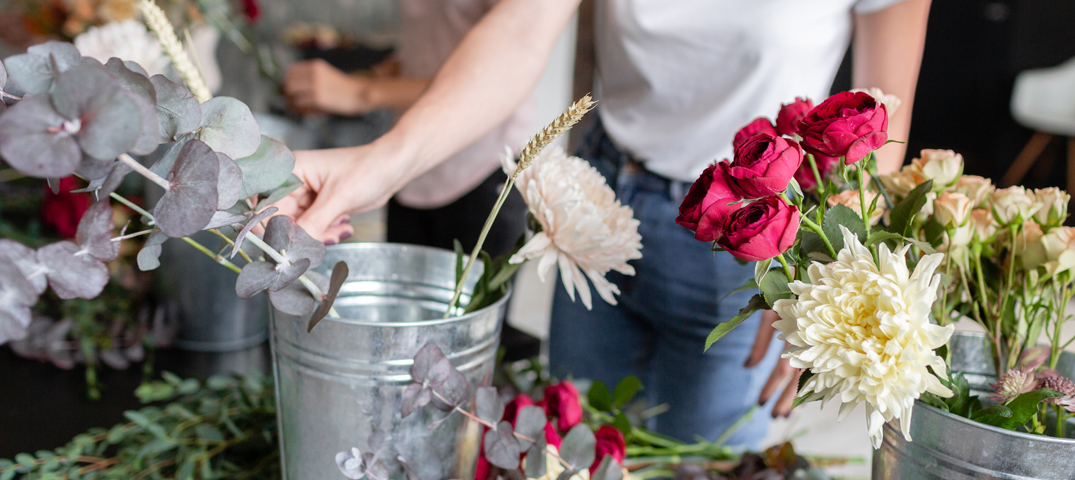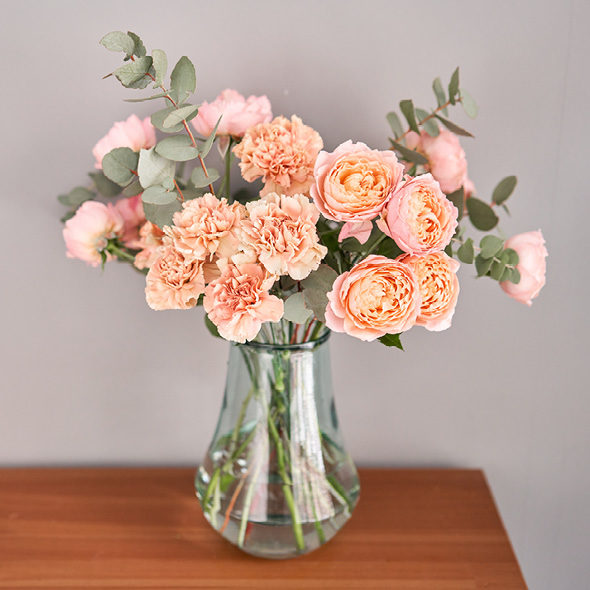
Three Unknown Factors That Affect The Life Of Fresh Cut Flowers
Summary:
- Flower food sustains flowers, decreases the presence of microorganisms, and helps them absorb water and nutrients more effectively. Combined, these factors keep your flowers looking and smelling better, for longer.
- The three key components of flower food are citric acid, sugar, and an antibacterial agent.
- Flower food is easy to make at home using household items.
- Many DIY recipes use bleach, so take care to ALWAYS MIX THE OTHER INGREDIENTS FIRST, THEN ADD BLEACH AS THE FINAL STEP.
- When your vase water becomes cloudy, change out your water and make a new batch of flower food.
- Trim your stems, pick out dying vegetation, and remove any wet leaves or buds from your arrangement and water.
- If DIY flower food is not for you, check out our ready-made range at Koch & Co.
A bouquet is always something special to give or receive, whether it’s from the corner shop or a boutique florist. To keep your flowers fresher for longer, we have some simple DIY flower food recipes below that can be made with simple household items.
What does flower food do?
As soon as your flowers are harvested, their life ends. If you want to enjoy them for any length of time, keeping them hydrated in a vase helps. But if you really want to keep your flowers fresher for longer, adding DIY flower food or even store-bought flower food to the water helps to feed your flowers and extend their freshness.

How does flower food work?
Flower food is usually made up of some variation of these three key components:
- Citric Acid
- Sugar
- Antibacterial Agent
Add these in the right ratio to your tap water, and your flowers will thank you.
Citric acid lowers the pH of your water. This acidification helps the water to move more quickly up the xylem in the plant stem. This in turn helps your plant cells to be more hydrated and distended, which helps to slow wilting. As an added bonus, acid also discourages bacterial growth in the water and thus helps to slow the deterioration of your flowers.
In flower food, sugar acts as the replacement source of energy that would otherwise be generated by photosynthesis, had the flower not been cut from the plant. Sugar is the fuel that powers a plant through its blooming and growth cycles, and as such plays a fundamental role in plant survival. To minimise damage during processing and to maximise shelf life, most cut flowers are harvested before fully blooming. Though stems and leaves contain energy stores, they are not always enough to complete the flowering cycle. Sugar in flower food provides the boost that helps buds to really bloom to their full potential.
A biocide such as bleach is a vital component of flower food. A biocide slows the deterioration of your flowers by inhibiting the growth of microorganisms like bacteria and fungi. Flower food is made up (in part) of sugar, sits in still water, and contains organic matter, and as such, it is necessary to have a biocide to counteract these conditions, which are otherwise ideal for microbial growth. Therefore, adding bleach can help slow stem rot, keep your vase water clear, and as such, keep your flowers smelling fresher for longer.
SAFETY INFO FOR BLEACH USE:
- When using bleach to make flower food, take great care, especially when handling and adding bleach to your mix.
- Keep bleach and flower food out of reach of children and pets at all times. Pour excess flower food into the sink. If you choose to store your excess flowers food, keep away from food products and label clearly as ‘toxic’ in a childproof container.
- Wear gloves when handling flower food and bleach, they will cause irritation or burns if contact with skin occurs.
- Fumes may irritate the respiratory system; so only follow these recipes in a well-ventilated area. NEVER add bleach directly onto other ingredients without having mixed them together with water first. Bleach should always be the final addition. NEVER mix bleach with vinegar directly together. They combine to create chlorine gas, which can be fatal in high concentrations.
DIY recipes for flower food:
- Soda + Bleach: A 375ml can of a non-diet citrus soda with 3 cans of water, and 1.2 ml of household bleach.
- Citrus juice + sugar + bleach: 2 tablespoons of fresh lime or lemon juice, 1 tablespoon of sugar, 1 quart (946ml) of water, and 1/2 tablespoon of bleach.
- Bleach-free: For those who would prefer not to use bleach, it is possible to use vinegar instead. Mix two tablespoons of white vinegar, two tablespoons of sugar, and one quart (946ml) of lukewarm water. Vinegar is a popular household disinfectant, but bear in mind that its antibacterial properties are inferior to those of bleach, so it won’t be as effective as the aforementioned recipes.

When do you need to add more flower food?
With flower food, it’s unfortunately not a one-time occurrence. Though the biocide (bleach or vinegar) will slow the deterioration of your flowers, you still need to change your water, clean your vase, and add new flower food. When you notice the water in your vase becoming cloudy, that means it’s time to refresh your vase water. It’s best to make fresh flower food each time you change your vase water, as the bleach is most powerful when it has just been mixed with the citric acid.
HOT TIP: It takes more than flower food and water to keep your flowers going. Flower food works better if your stems are better able to absorb it. Therefore, when you undergo the process of changing your vase water, make sure to also:
- Trim your stem ends. Trimming your stem ends helps to stop the stem from healing itself, like a wound heals itself on your skin. This allows the flower or foliage to continue absorbing water, which in turn prolongs its vase life. If you don’t have sharp secateurs or florist shears, grab your sharpest kitchen knife and slice. Slice your stem ends on an angle in order to increase the surface area of the stem exposed to water and nutrients. If you trim your stems with blunt scissors, this will crush the cell structure and make it more difficult for the stem to absorb anything.
- Remove any leaves or buds that might be sitting in the vase water. It’s important to remove leaves or buds that sit under the waterline of your vase because they decompose in the water, which accelerates the decomposition of your whole arrangement.
- Remove any vegetation that might be decomposing. Decomposing leaves or stems need to be removed from an arrangement because the bacteria and fungi can develop and cause the other stems to decompose more rapidly.

Where can I buy ready-made flower food?
At Koch & Co., we have a range of cut flower food options, which come in individual sachets, powders, and liquid. We are expanding our range, so watch this space for even more convenient and effective flower food solutions.
We also stock a range of professional grade imported roses wholesale fresh cut flowers. These roses have large blooms, and are hydrated on every step of their journey with premium flower food. This guarantees our roses arrive at your or your client’s home before they reach full bloom.
With these simple DIY flower food recipes and our range of Koch & Co. flower food products and tools, you have all the knowledge you need to keep your flowers fresher for longer. For more info, read our other Koch Blogs Three Unknown Factors That Affect The Life of Fresh Cut Flowers and A Guide On How To Rehydrate Your Fresh Flowers.
The post DIY Flower Food to Keep Your Flowers Fresher For Longer appeared first on Koch & Co Blog.